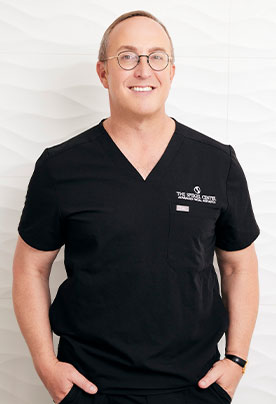5 things you need to know before a mole removal:
Sometimes a mole, or several moles, can really be a problem. They may be growing and changing and it’s safer to get them removed. Other times they can get in the way by catching on jewelry or clothing, or make shaving difficult. And, importantly, you may just not like the way they look.
Moles typically vary in size and color, from natural beige or pink to brown or black depending on the individual skin color, and they may be flat or raised or appear in clusters. Some people are prone to developing moles and it’s not uncommon for adults to have in excess of twenty moles. Most of the time they’re not dangerous, even if they are a nuisance and unattractive. But, if a mole changes color or shape, starts to become itchy or bleed, or seems irregular, you should seek attention as some moles can develop into skin cancer or other serious problems. If you have a concerning mole your dermatologist is likely to recommend a facial plastic surgeon for the procedure.
When moles are removed they are often sent for pathological testing to be certain there is no underlying problem.
Whenever you get a mole removed you get a scar. However, our job is to make sure that the scar is small and well-hidden, so that you make a very good “trade” in exchanging the mole for the small scar. We know many ways to remove moles, and will help guide you to the method that will get you the best result in the quickest time.
- Excision – After your skin is cleaned with alcohol and betadine numbing is applied to the area to ensure that you are completely comfortable throughout the procedure. The surgeon then removes the mole completely and will place one or more stitches. Sometimes these stitches will dissolve and other times they’ll be removed in 6-10 days. You’ll keep the area covered with a small bandage, which typically blends well with your skin.
- Shave or shave excision – In this method, the mole is precisely shaved off the skin but no stitches are required. The area will look like a small scrape. The surgeon may cauterize the area adjacent to the mole to improve appearance and limit scar formation. Again, a bit of ointment and a small bandage is all you need afterward.
- Laser – different lasers or energy-based devices can be used to shrink or destroy a mole in a very careful and accurate fashion. Laser excision typically does not require stitches, and again, some ointment and a small bandage are placed for a few days.
- Cauterization – occasionally a mole, skin tag, or other skin irregularity is best treated with hyfrecation or cauterization where the area is quickly “zapped” with energy to desiccate and destroy the abnormal tissue. This is a particularly nice method for small growths and you may not need any bandages or covering afterward.
- Fading – some obviously safe moles that are dark in color can be lightened or faded, so they are less visible against the background of the rest of your skin. We have skin care products, Intense Pulsed Light (IPL), and other ways to lighten pigmented moles so they relatively disappear. No surgery required!
At TSC we enjoy removing moles as we get excellent results and get happy patients. Often, mole removals can be done the very same day as your consultation.





